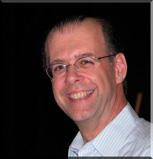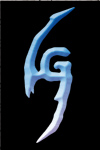Topics
1994 ARPA essays
- Needed: Digital Assistants that See and Hear
- The Time has come for Style and Fashion in Electronics
- Advanced Displays: Windows into Information Warfare
- Electronics Evolution: Diversity Revisited
- Today's Technology Begets Tomorrow's Military Readiness
Semiconductor design and manufacturing
Research papers of note
- Multi-port RAM
- Magnetic Flux-Controlled Gate Voltage in Superconducting Field-Effect Transistors
- Modelocking with GaAlAs and GaInAsP semiconductor laser diodes.
- Magnetic power and comm interface to a CMOS chip
- Frequency limitations in circuits composed of linear devices and The stability and passivity of MOSFET device models that use nonreciprocal capacitive elements
- Continuous Models for Communication Density Constraints on Multiprocessor Performance
Technology
© Lance A. Glasser 2007-2010
All Rights Reserved
Poetry and cleantech investing. I am occasionally asked by friends about prospects for all sorts of “green” technologies to have an impact on satisfying the world’s energy consumption. It is difficult to get ones mind around the scale of the problem but there have been some pretty good attempts. To these quantitative analyses I want to add a test that any layperson can use to sort out plausible new energy technologies from the implausible. That test is a test of poetry.
E-beam direct write is free. In this paper we discuss four business concepts that will impact the adoption of e-beam direct write (EbDW). They are: (1) The economically advantageous region for EbDW. At what costs and volumes EbDW is economically advantageous is controlled by a two-sided constraint involving the cost of reticles on one hand and the cost of design on the other. (2) The important role of product derivatives and other markets that can be satisfied by designs with heavy IP reuse. The natural long tail in demand for differentiated products is today chopped off by the high costs of reticles. We show data on the elasticity of the product derivative market with respect to certain costs. (3) That because reticle prices typically decline at a 30% per year for the first few years after a new node is introduced, delaying the fabrication of that first reticle set for a new product can save millions, more than paying for EbDW. The applicability of this technique is, however, limited by the need for product requalifaction. (4) Finally, we introduce the business concept of the virtual reticle as a possible component in EbDW pricing.
Smaller Faster Cheaper. The semiconductor industry provides discretionary trinkets for jaded first-world teenagers, on one hand, and information appliances to the developing masses, on the other. Semiconductor companies compete on a global scale—Idaho competes with Germany competes with Japan competes with Korea competes with Taiwan competes with China. There is no shade from the blaze of competition. Price and margin pressures are enormous, and growing. We look at the impact of these trends on semiconductor manufacturing.
DFM: It's the pattern. DFM has been a hot topic for the last few years. Why? What has changed? It is that the basic contract between manufacturing and design has been broken.
Paleozoic era
Needed: Digital Assistants that See and Hear. Published January 1994. No copyright. Discussion by Lance Glasser of ARPA (DARPA) on the need for sensors and actuators as integral parts of useful information systems.
The Time has come for Style and Fashion in Electronics. Published February 1994. No copyright. Discussion by Lance Glasser of ARPA (DARPA) of electronic product differentiation for the consumer.
Advanced Displays: Windows into Information Warfare. Published March 1994. No copyright. Discussion by Lance Glasser of ARPA (DARPA) of information and people on the future battlefield.
Electronics Evolution: Diversity Revisited. Published April 1994. No copyright. Discussion by Lance Glasser of ARPA (DARPA) of analogies between bio-diversity and electronic product diversity. Analysis of the sizes of objects in Wendy J. Glasser's kitchen.
Today's Technology Begets Tomorrow's Military Readiness. Published July 1994. No copyright. Discussion by Lance Glasser of ARPA (DARPA) of dual-use technology and its role in military systems.
Precambrian period
I was a member of the team that first modelocked a semiconductor laser. We did it first with GaAlAs and then with GaInAsP. These experiments generated pulses more than an order of magnitude shorter than anything previously achieved. One doesn't get to do that too often over the course of a technical career. The first paper is "Picosecond pulse generation with a cw GaAlAs laser diode." The second is "c.w. modelocking of a GaInAsP diode laser."
During my time on the M.I.T. faculty, my students and I did get some chances to do some work that was just plain fun. In 1988 Charles Zukowski was taking an advanced math course and we decided to apply it to massively parallel multiprocessors. We did what electrical engineers had done for 100 years, we went to the continuous limit. The paper is "Continuous Models for Communication Density Constraints on Multiprocessor Performance." That was theory. On the experimental side, Adam Malamy, Charlie Selvidge, and I built a monolithic digital CMOS device that connected to the outside world without wires. Power, signal in, and signal out, were all accomplished wirelessly. It was actually pretty tricky to do with the technology of the day: 3 micron CMOS with Aluminum metalization. The paper was "A magnetic power and communication interface for a CMOS integrated circuit."
The theoretical work of which I am most proud was on a linear circuit theory conservation theorem that produced tight bounds on the performance of circuits composed of linear elements. The basic paper was titled "Frequency limitations in circuits composed of linear devices." I followed it by some work that built on that foundation, including "The stability and passivity of MOSFET device models that use nonreciprocal capacitive elements." Prof. John Wyatt of M.I.T. was my coach and mentor for this whole set of activities.
This thinking plus many discussions with Prof. Paul Penfield, Jr., helped me uncover the only time I was able to predict new physics, another thing one does not generally get to do too often in a career. I was working as a visiting senior researcher at Hitachi Central Labs in the western suburbs of Tokyo on superconducting transistors. These are really charge-controlled Josephson junctions. What I discovered was that if the gate charge controls the magnetic flux between the source and the drain, then passivity requires that the flux also control the gate voltage, which was a new concept. The paper is, "Prediction of magnetic flux-controlled gate voltage in superconducting field-effect transistors."
In 1990 I filed a patent on a new kind of multiport memory. It exploits the fact that we store words rather than just bits in memories. By storing the words in clever ways one can tolerate collisions among accesses to the memory and still guarantee perfectly correct results. Prof. Ron Rivest of M.I.T. helped me with the concepts and we wrote a memo on it called "A fast multiport memory based on single-port memory cells." By the way, I still own this patent, so if you know of someone using this concept, please let me know.
Check out Lance's new company Audio Everywhere
The opinions here do not necessarily represent the views of any past, present, or future employer.



